The Bodhi, Bodhi Fig, or Bo Tree (Ficus Religiosa) is among the most revered trees for Buddhists. It was under the Bodhi Fig Tree that Siddharta Gautama achieved enlightenment at Bodh Gaya in Bihar, India. King Ashoka, a devout follower of the Buddha, built a Temple complex, the Mahabodhi Temple, around the Bodhi Tree. Thus, this site has become among the most important pilgrimage destinations. The Bodhi Tree planted there is known as the Mahabodhi Tree.
Mahabodhi Tree Legacy
The Mahabodhi Tree now growing at the Mahabodhi Temple is not the same under which Siddharta Gautama achieved enlightenment, but it is believed to be a direct descendant from that original Bo Tree. Cuttings or coppices from the Mahabodhi Tree have been taken to several other locations, making these places sacred also. In particular:
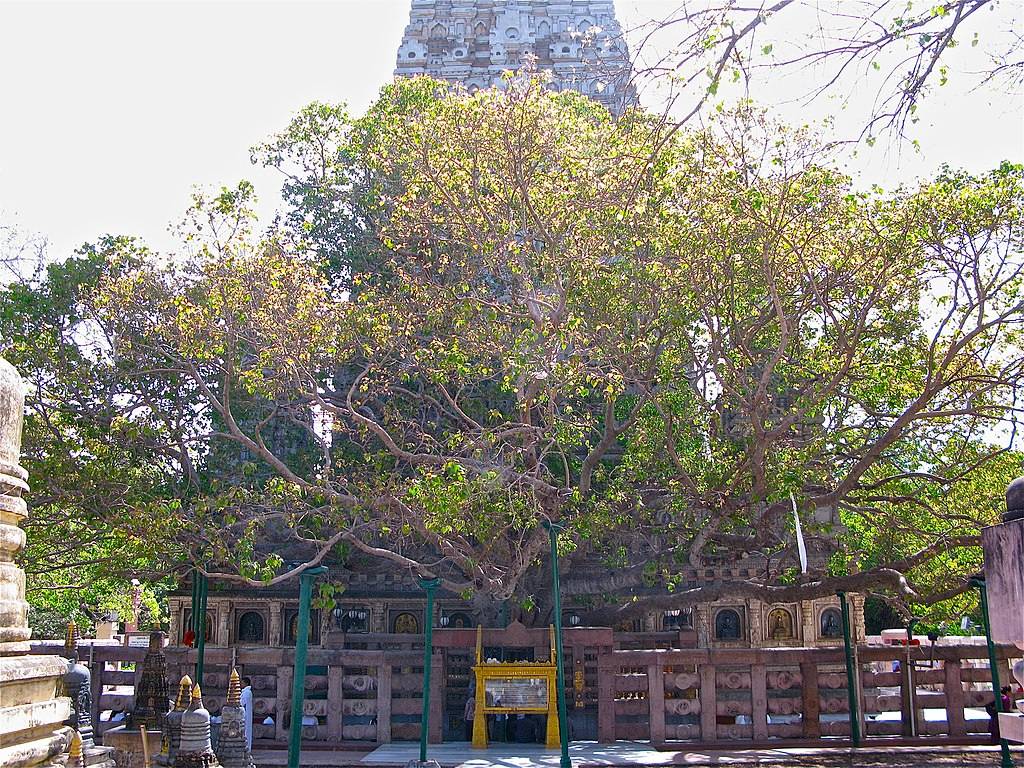
Ken Wieland from Philadelphia, USA, CC BY-SA 2.0, via Wikimedia Commons
- The Jetvana Monastery in Uttar Pradesh, India, has a Bodhi Tree believed to be taken from the fruit of the Bodh Gaya Mahabodhi Tree by Anathapindika, Buddha’s chief supporter.
- The Jaya Sri Maha Bodhi in Anuradhapura, Sri Lanka, was planted by a cutting from the original Bodhi Tree. Pilgrims deeply venerate this site. This is possibly the oldest living tree planted by a human.
- A cutting from the Bodhi Tree at Bodh Gaya was brought to Trấn Quốc, Hanoi, Vietnam in 1959. It grows in the pagoda there.
Cuttings from either the Jaya Sri Maha Bodhi Tree or the Bodh Gaya Bodhi Tree have also been planted in California, Hawaii, Chennai, Japan, and the Philippines.
In fact, Theravada Buddhists list 28 Buddhas that achieved enlightenment but who appeared before Siddharta Gautama. According to tradition, all of them achieved enlightenment under 22 different trees. Celebrations of Atavisi Buddha Puja commemorate these Buddhas achieving enlightenment. Some temples commemorate the Patan Bo (Ficus arnottiana) instead of the Ficus religiosa Bodhi Tree.
The Tree to Facilitate Further Liberation
The ultimate goal for all people is to achieve enlightenment. But for only 28 people in all human history to have been able to achieve it, it would appear to be a futile pursuit. So the Creator God announced a plan at the beginning of history to assist those needing help because of their sin and karma. He gave further signs over the centuries, laying out in more details this plan.
The prophet Isaiah used a similar image as the Bodhi Tree’s ability to sprout new shoots from cuttings to help us understand this plan better. It pictures a dead tree… coming to life… representing a new son from a dead line of kings. But Isaiah simply began the image and other prophets developed it further. Their composite story predicted that someone was coming. Their prophecies form a story of The Branch from the Dead Tree.
The Branch of Isaiah
Isaiah lived in historically verifiable time, seen in the timeline taken from the history of the Jews.
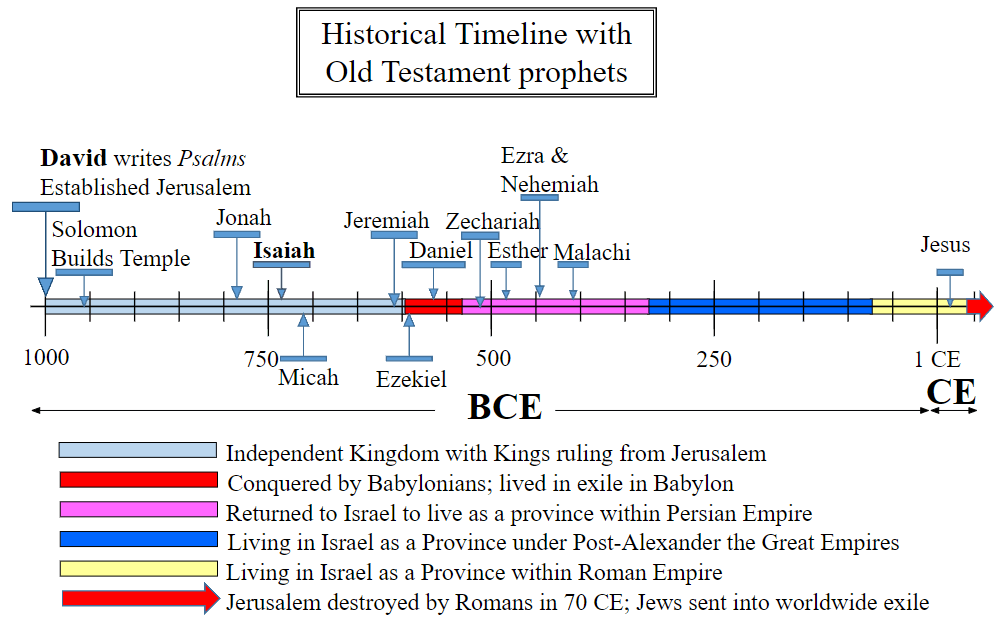
He wrote when King David’s Royal dynasty (1000 – 600 BCE) ruled from Jerusalem. In Isaiah’s time (750 BCE), the dynasty and rule was corrupt. Isaiah pleaded for the kings to return back to God and to the practice of Moses’ Ten Commandments, but Isaiah knew that Israel would not repent, so he foresaw the destruction of the kingdom and the kings would cease ruling.
He used an image for the royal dynasty, picturing it like a great tree. This tree had at its root Jesse, the father of King David. On Jesse, the dynasty of kings began with David, and continued with his successor, King Solomon. As illustrated below, the tree continued to grow and develop as the next son in the dynasty ruled.
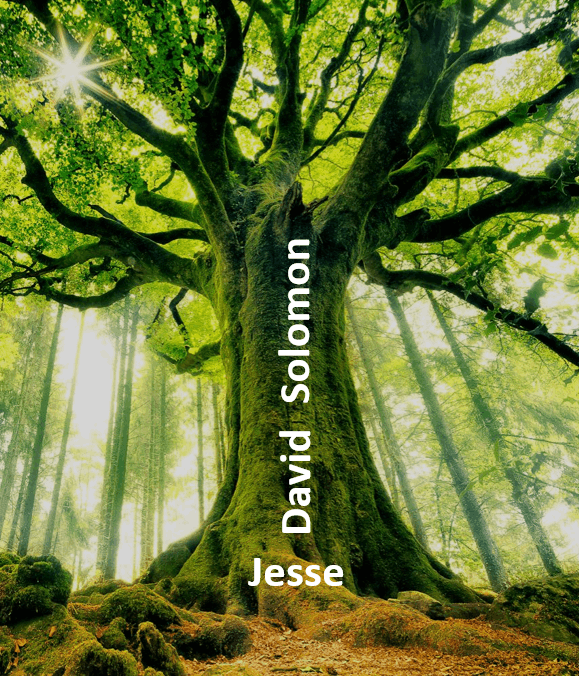
First a Tree… then a Stump… then a Branch
Isaiah warned that this ‘tree’ dynasty would soon be cut down, making it a dead stump. Here is how he wrote out this oracle as the riddle of a stump and Branch:
1 A shoot will come up from the stump of Jesse;
Isaiah 11:1-2
from his roots a Branch will bear fruit.
2 The Spirit of the Lord will rest on him—
the Spirit of wisdom and of understanding,
the Spirit of counsel and of might,
the Spirit of the knowledge and fear of the Lord—
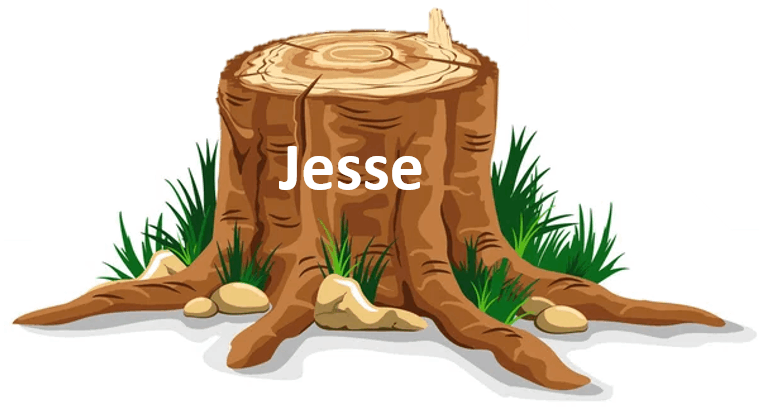
The Babylonians felled this ‘tree’ 150 years after Isaiah, around 600 BCE. The Babylonians conquered Jerusalem, shattered the dynasty of kings, and dragged the Israelites into exile in Babylon. This was the first Jewish exile – some of whom migrated to Asia. The stump image predicted that the line of kings would cease to rule and the dynasty would cease functioning.
The Branch: A Coming ‘Him’

But the prophecy also looked further into the future than just the cutting down of the kings. It did so using a common feature of the bodhi tree. When its seeds germinate they often do so on the stumps of other trees. The stump is a host to the germinating bodhi seed. Once the bodhi seedling establishes, it will outgrow and outlive the host stump. This shoot foreseen by Isaiah would be like a bodhi tree since the shoot would root to form a Branch.
Isaiah used this imagery to prophesy that one day in the far future a shoot, known as the Branch, would emerge from the dead stump. Isaiah refers to the shoot as a ‘him’. So Isaiah prophesies about a specific man, coming from the line of David after the dynasty would fall. This man would have such qualities of wisdom, power, and knowledge that it would appear the very Spirit of God would be on him.
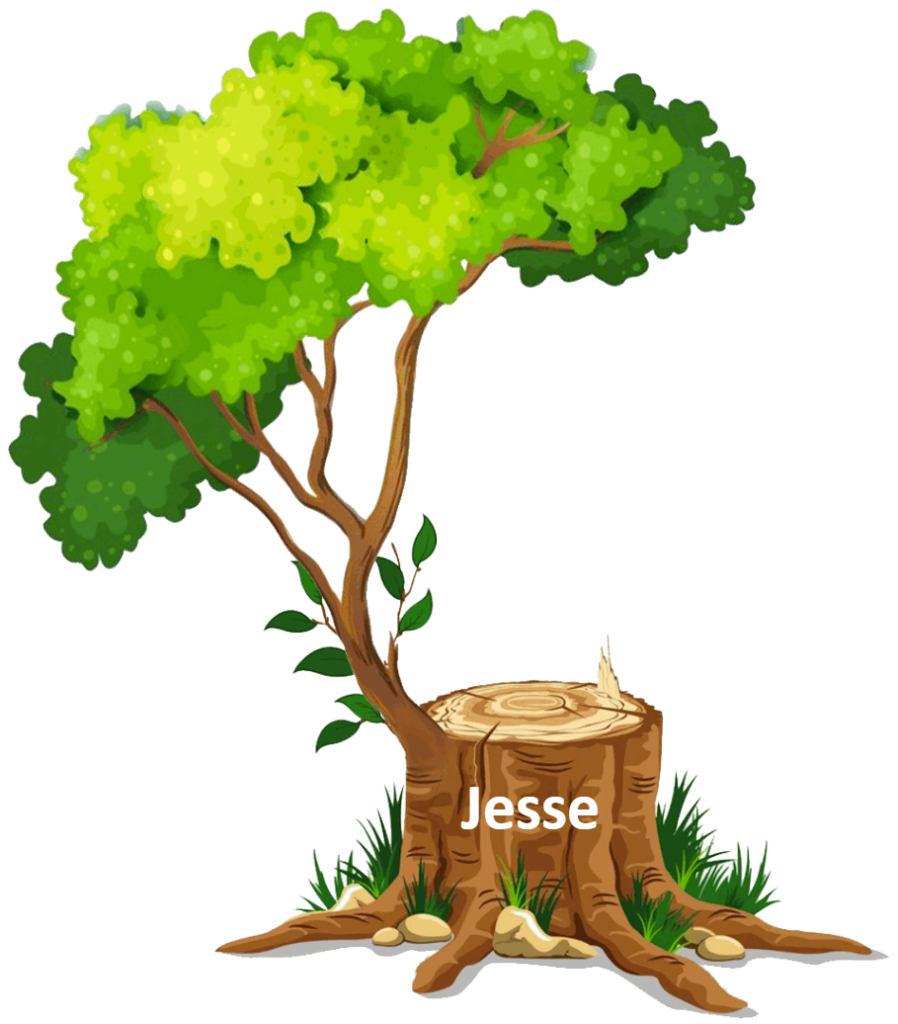
This Branch foreseen by Isaiah in 750 BCE would last long after the dynasty ‘stump’ disappeared.
Jeremiah and the Branch

The prophet Isaiah had erected a signpost so people would understand unfolding future events. But his was only the first of several signs. Jeremiah lived about 150 years after Isaiah, in 600 BCE. At that time the Babylonians cut David’s dynasty down right before his very eyes. He wrote:
5 “The days are coming,” declares the Lord,
Jeremiah 23:5-6
“when I will raise up for David a righteous Branch,
a King who will reign wisely
and do what is just and right in the land.
6 In his days Judah will be saved
and Israel will live in safety.
This is the name by which he will be called:
The Lord Our Righteous Savior.
Jeremiah expanded on Isaiah’s Branch image of David’s dynasty. The Branch will also be a King. But not a King like the previous kings of David who had been reduced to a dead stump.
The Branch: The LORD our Righteousness
The difference with the Branch comes out in his name. He would bear the very name of God (‘The LORD’ – The Hebrew name for God). So this Branch would be an image of the Divine. He would also be ‘our’ (us humans) Righteousness.
Our problem is our corruption or sin, and so we lack ‘righteousness’. The Bible tells us that we therefore do not have power to pay karma. In fact it says we are helpless against:
14 Since the children have flesh and blood, he too shared in their humanity so that by his death he might break the power of him who holds the power of death—that is, the devil— 15 and free those who all their lives were held in slavery by their fear of death.
Hebrews 2:14-15
Here, in the ‘Branch’, the LORD promised that in the future he would give ‘righteousness’ to us so we can have victory over death.
How?
Zechariah fills in further details as he develops this theme. He predicts even the name of the coming Branch, which we look at next.